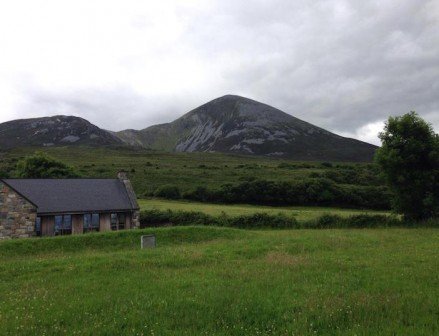Shots of Science St. Patrick’s Day Green Science Special
The newest addition to Dublin Zoo is a brilliant bright green python which can be seen by visitors to the zoo for the first time this weekend. In the wild the Green Tree Python, or Morelia viridis, live in the rainforests of New Guinea and northern Australia (yes, we checked, apparently there are rainforests in dry dusty Australia). This specimen however, came from the Emmen Zoo in the Netherlands. Like many animals, Pythons are threatened by tree logging in rainforest regions and Dublin Zoo works with a number of conservation projects to improve biodiversity in the world. As suggested by its name the Green Tree Python likes slithering and coiling around tree branches. It is non venomous but likes to munch on small mammals and an occasional reptiles. The Zoo haven’t released its name but I’d like to think they named him Patrick.
Dublin Zoo is open on St. Patrick’s Day. http://www.dublinzoo.ie
A study published in Nature Climate Change on March 9th predicts an unprecedented rise in the global mean temperature by as early as 2020 based on present greenhouse emission trends. Steven J. Smith and researchers from the Pacific Northwest National Laboratory in the United States showed that by 2020 that rate of global mean temperature increase per decade will be 0.25 ± 0.05 °C with Europe, North America, and the Arctic to increase at a higher than average rate. The research was based on palaeoclimate data looking at rates of change in different forty year periods and comparing the past to the present. Over the last millennium the average rate of change in global mean temperature was rarely higher than 0.1 °C per decade. This newest study advises that urgent research is needed to show what impacts these new higher rates will have. The human caused global warming will mean the need for quick adaptation both by humans and nature.
http://www.nature.com/nature/journal/v519/n7542/full/519132b.html

The State of the European Environment Report was released this month and looks at how Europe is doing in terms of the 7th Environment Action Programme. The programme is titled ’Living well, within the limits of our planet’ and look to create a “low carbon society, a green, circular economy and resilient ecosystems, as the basis for citizens’ well-being” by 2050. The report recognises that long term economic prosperity is linked to natural resources. It reports that the green economy grew by 50% between 2000 and 2011. The report cites three key objectives by 2050, “protecting the natural capital that supports economic prosperity and human well-being; stimulating resource-efficient, low-carbon economic and social development; and safeguarding people from environmental health risks. The data shows that Europe is failing to meet the goals set for 2020 and the report calls for more a greater sense of urgency and courageous actions.
http://www.eea.europa.eu/soer-2015/
Finally, on this, the greenest of green Irish weeks celebrate all green science and watch Hank Green’s (brother of ‘Fault in Our Stars’ author John Green) CrashCourse Ecology to learn more about what makes nature go ‘round.
https://www.youtube.com/watch?v=sjE-Pkjp3u4&list=PL8dPuuaLjXtNdTKZkV_GiIYXpV9w4WxbX
And if you want to become a little greener after reading shots of science this week try some of my favourite wonderful green websites for ideas. Maybe you’ll even be tempted into some courageous green actions.
